D
Darkstar416
Guest
The Sched:
Amsterdam I
Amsterdam II
Rotterdam I
Rotterdam II
Paris I
Paris II
Paris III
London I
London II
Here is Rotterdam II...
Entrance to the Blaak intermodal transit station. Trams run above groud, the metro runs underground and national rail services run even deeper underground.

Want to catch the 13:58 to The Hague?
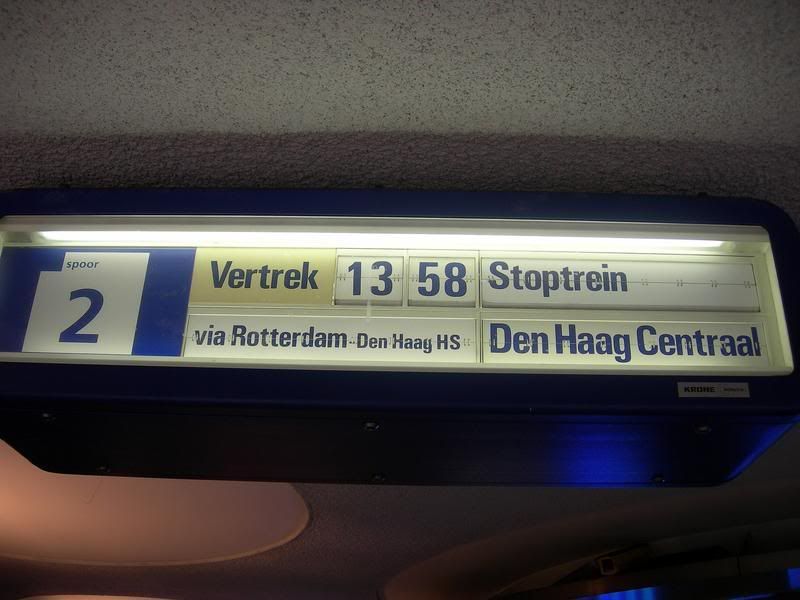
Entrance to the metro portion of the station.
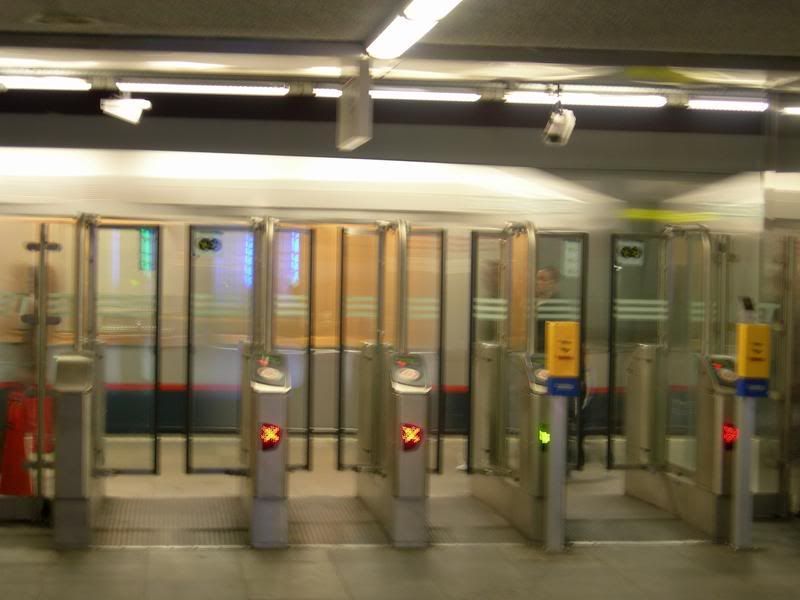
The station was designed in such a way that daylight can reach even the deepest platform. Take that Montreal!

More residential towers are comming soon. The "Red Apple" will rise here over the next few months.

The Willemsbrug.
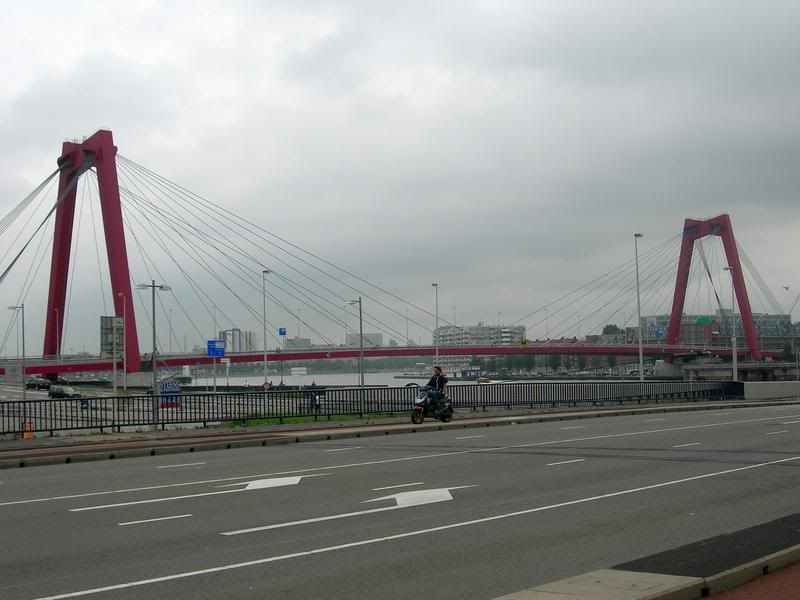
The Willemswerf was completed in 1989 and measures 88m. Jackie Chan slides down this slope in the movie Who Am I.

The Erasmusbridge is considered the signature of the city. Behind it, the Montevideo residential tower can be seen to the left, and the World Port Centre to the right. Keep in mind that Rotterdam has Europe's largest port!
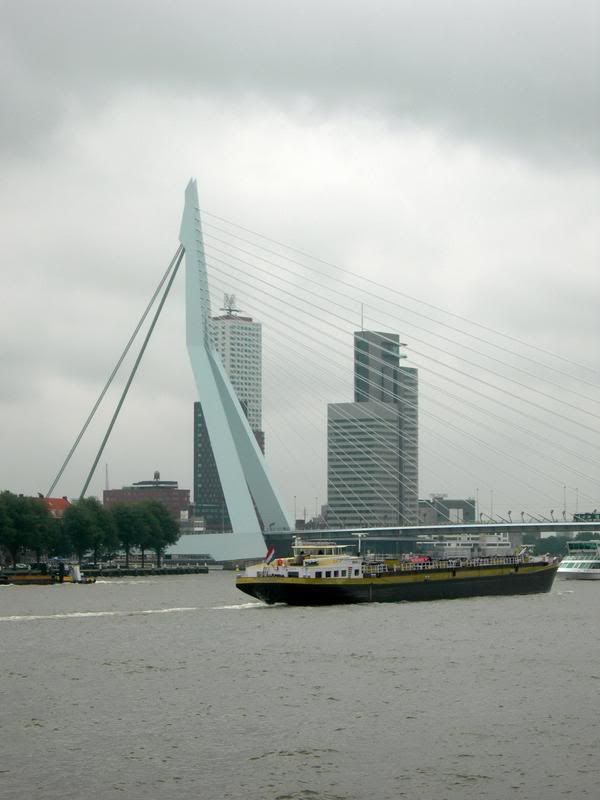
The 'Toren op Zuid' (a KPN Telecom building, right behind the island in the centre of this picture) was completed in 2000 and is 96m tall. That's the River Maas in the foreground. Also, I must say that while the waterfront architecture certainly kills almost anyhting we have in T.O., I'd actually argue that our central waterfront is slightly nicer and better used. Believe it or not, Toronto seems to have gotten the smaller things better!
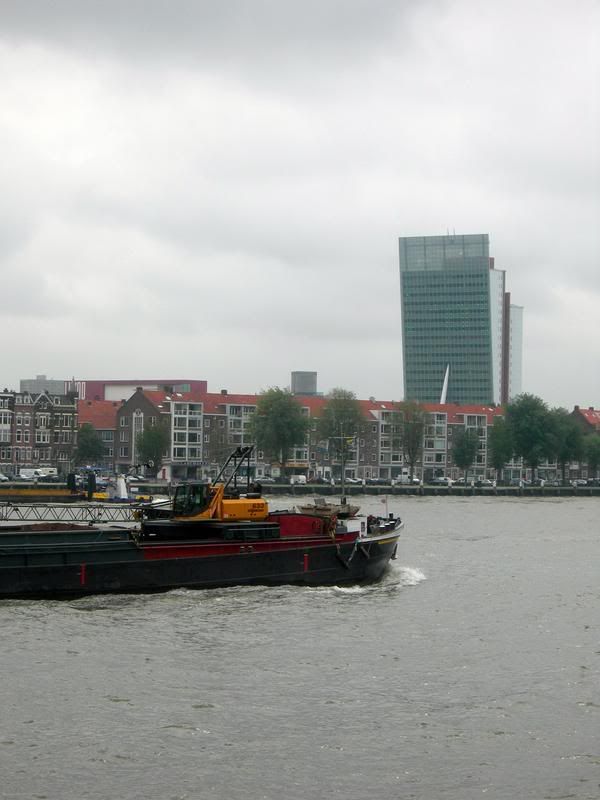
The new Golden Tulip Hotel. They are actually still finishing construction on this building which has perfect views of the Erasmus Bridge.
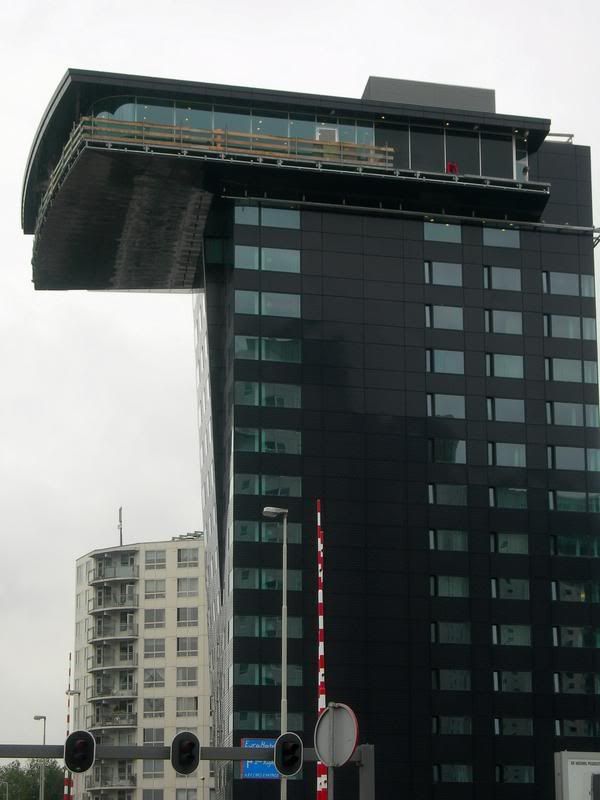
A WWII monument by the waterfront.
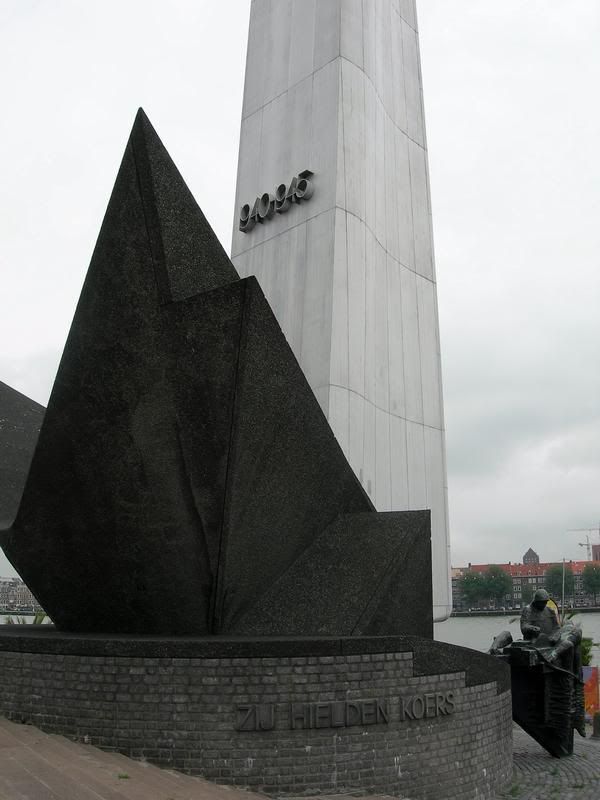
The Erasmus bridge is also called 'the Swan' by locals, because of its graceful posture over the water. In the background, the Toren op Zuid can be seen.
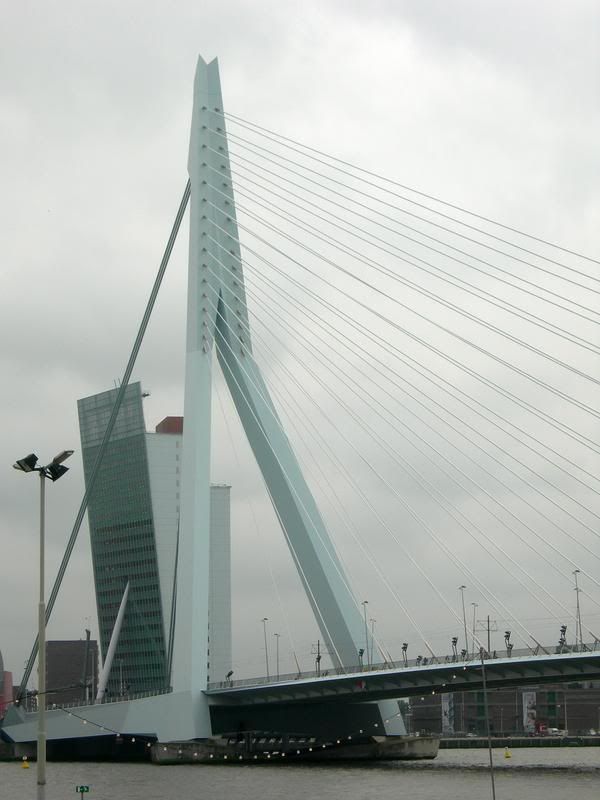
More of the Golden Tulip Hotel.
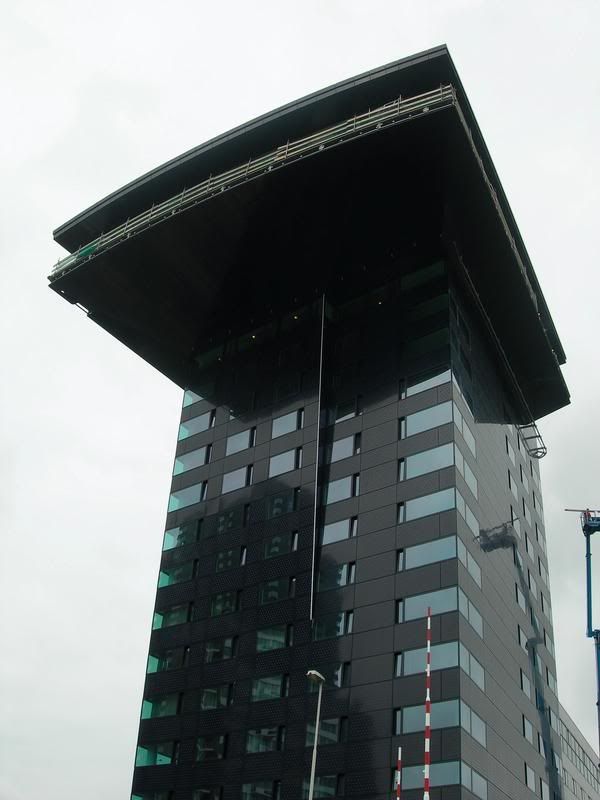
A new waterfront residential development.
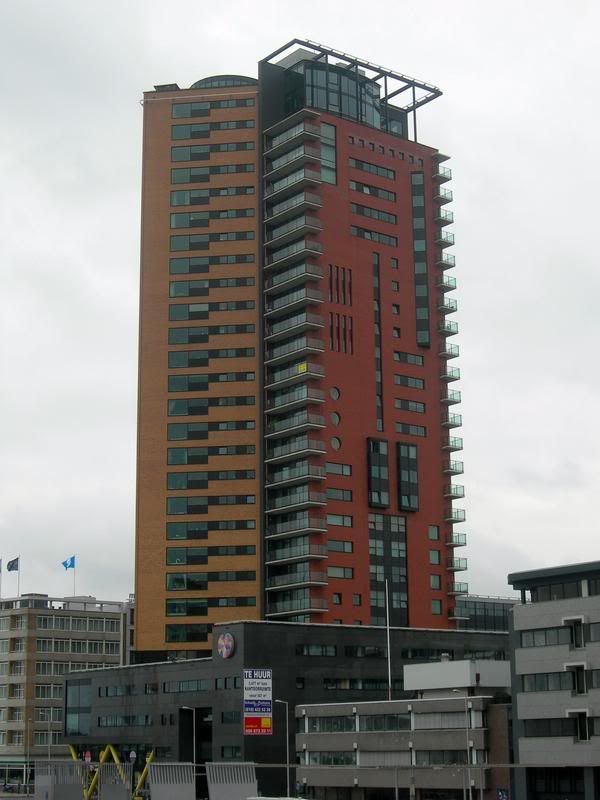
In typical Dutch style, all modes of transport are separated on the Erasmus Bridge. Trams, cars, bikes and pedestrians each have their own right-of-ways.
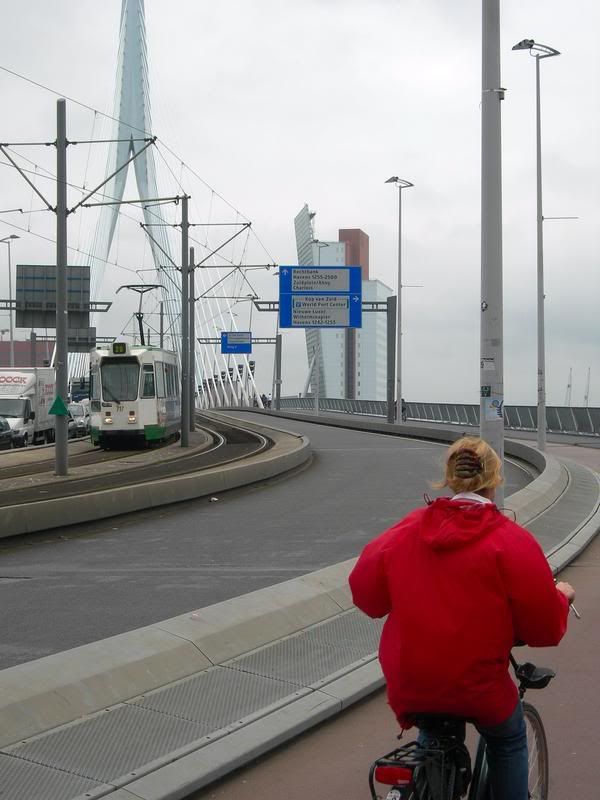
New and old trams on the Erasmus Bridge.
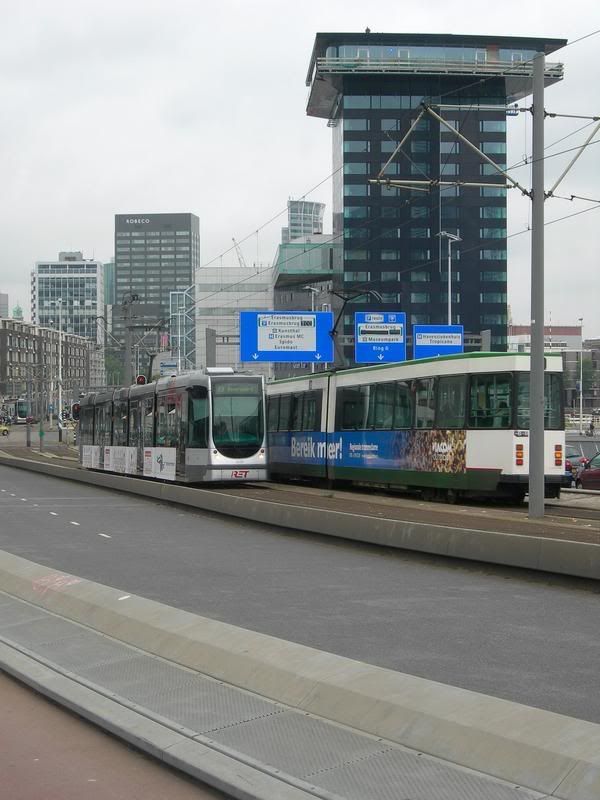
Waterfront skyscrapers; a mix of residential and office towers.
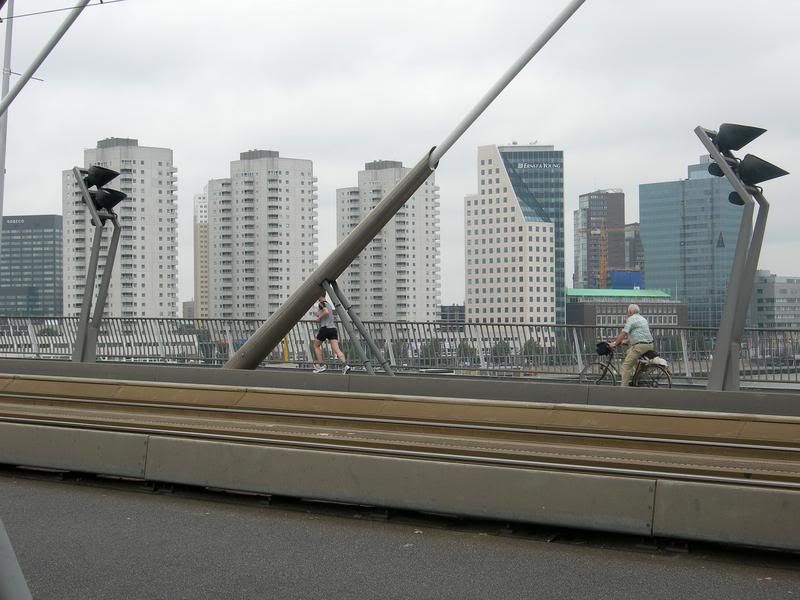
Looking up the Erasmus Bridge. It is 139m tall and was opened in 1996.

The Toren op Zuid ("Tower on the South" if you want to literally translate it) was completed in 2000.
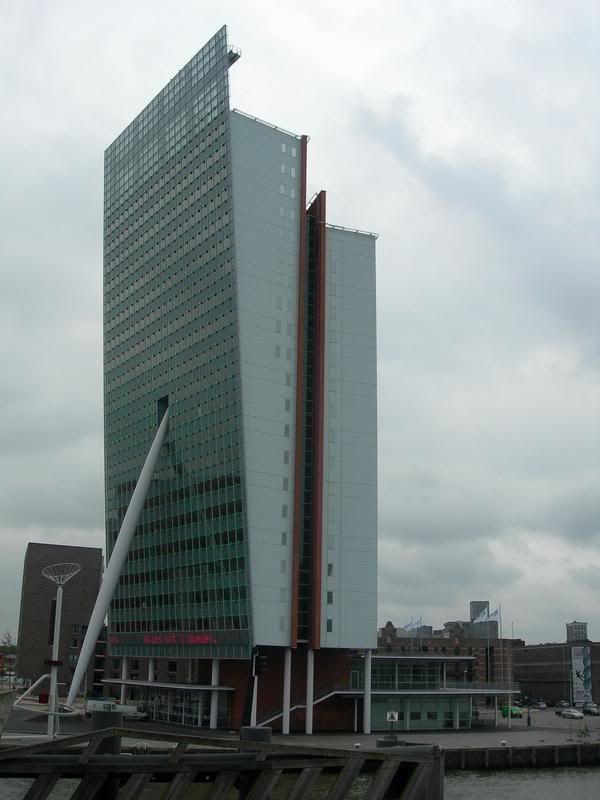
This was supposed to be Europe's biggest TV screen, but that proved too expensive. Now they just have these 896 green dots that light up. Still pretty darn cool though!

Looking up the foreward-leaning Toren op Zuid.

The building to the left is the Court of Justice. To the right, above the metro entrance, the the new Luxor Theatre.
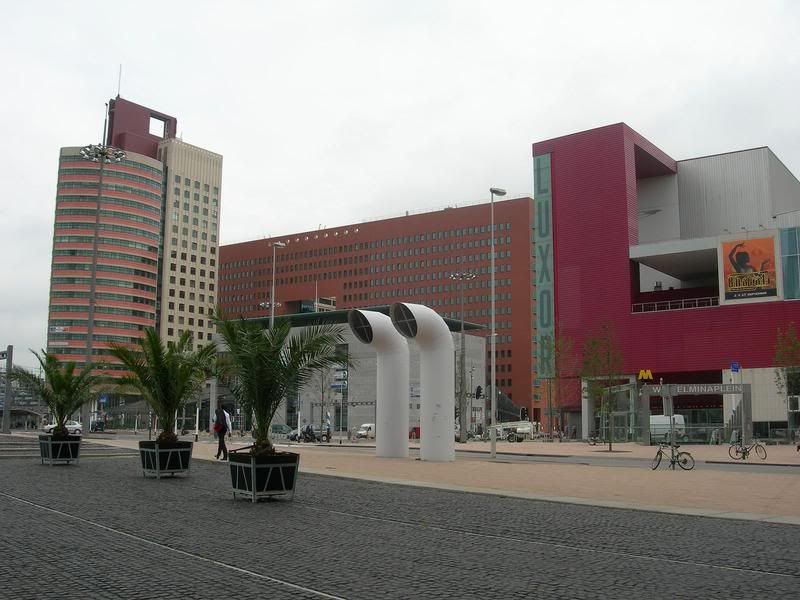
Underground walkway in the Wilhelminaplein metro station.
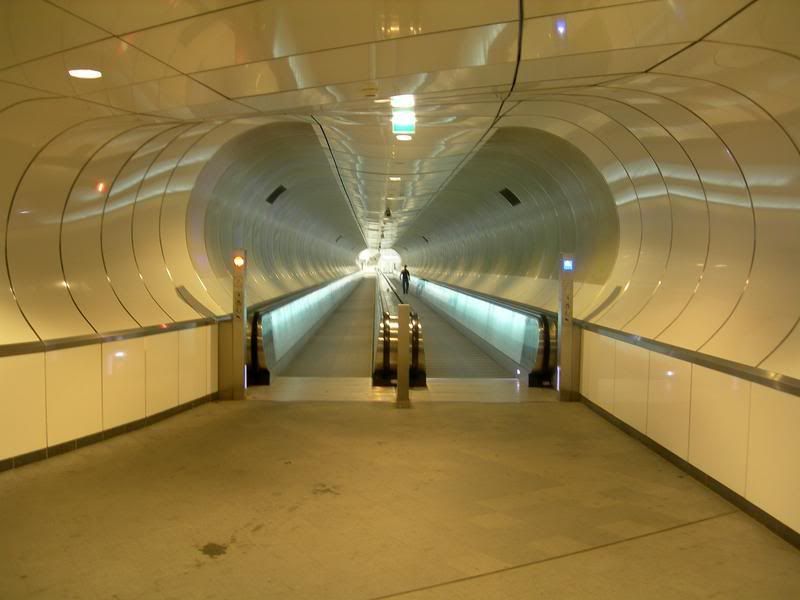
Wilhelminaplein metro (cont.)
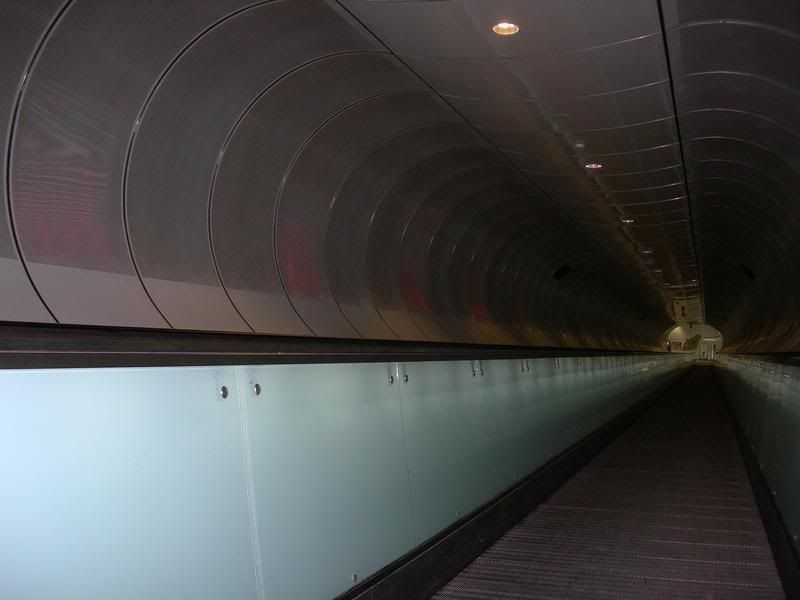
This square is surrounded by buildings that are part of the Court of Justice complex.
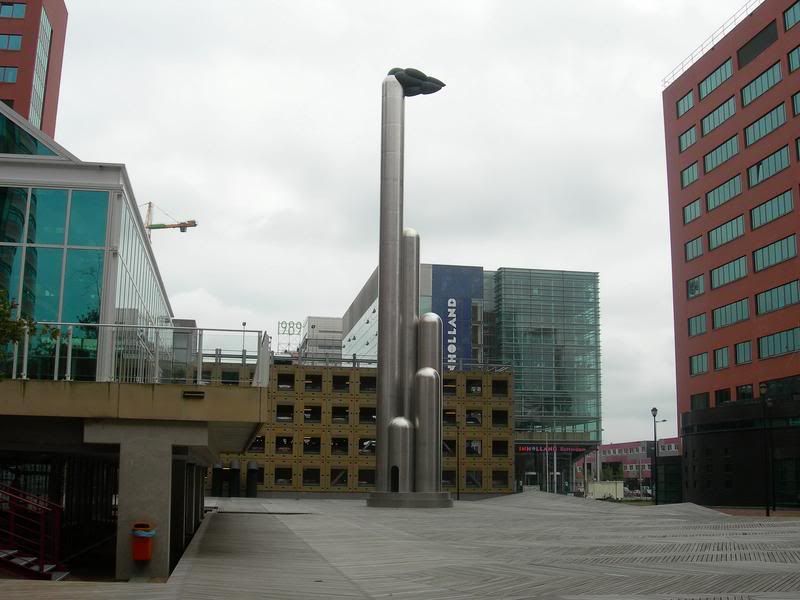
Car entrance to the court's underground parking garage.
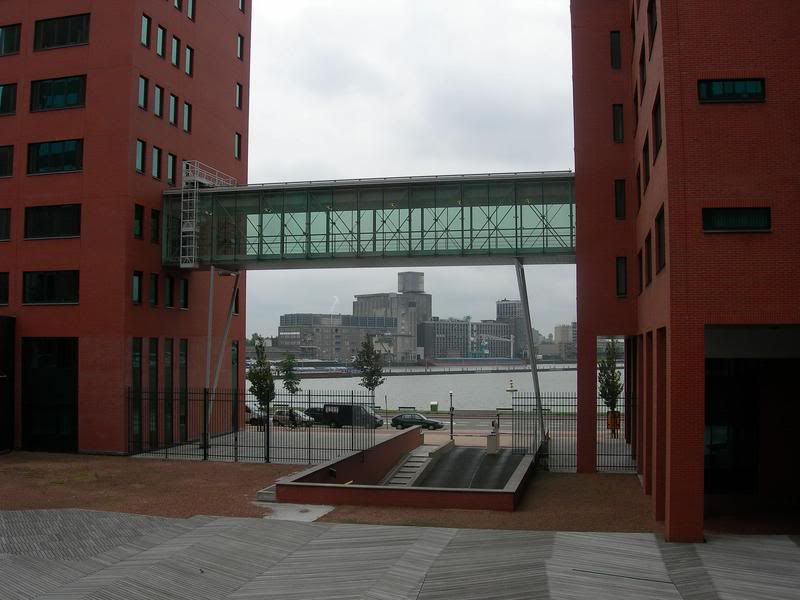
The court's multi-storey parking garage. Too bad all parking lots don't look this good!

The Court of Justice complex (cont.)
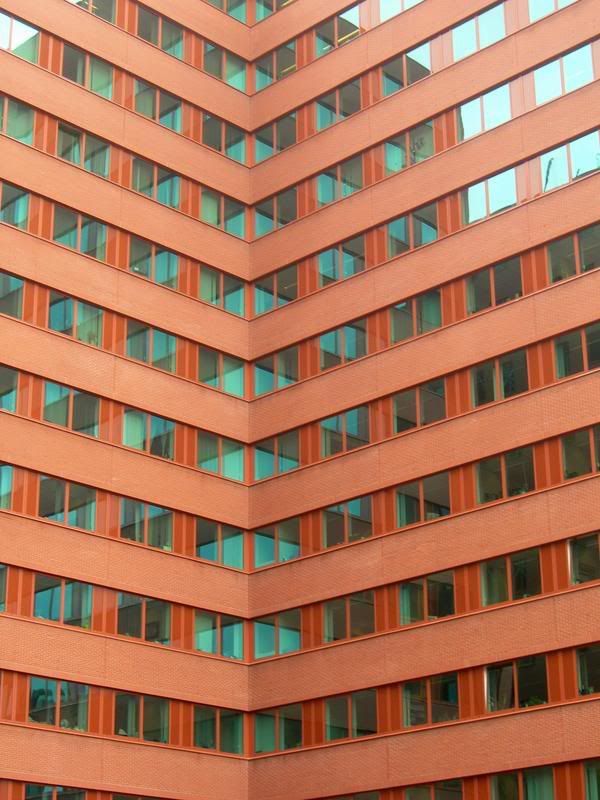
Myself and Ronald inside the courtyard. In the background, another entrance to metro can be seen.
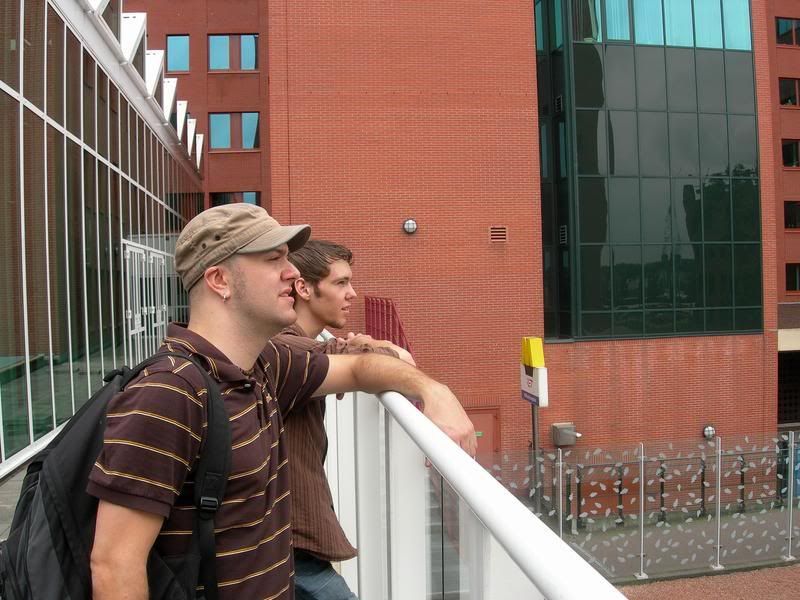
Inside the courtyard's art installation.
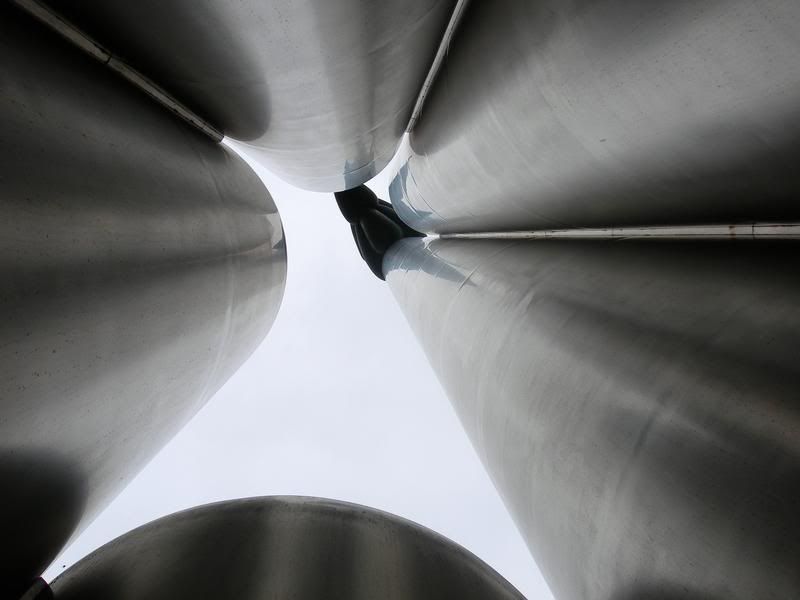
Wilhelmina Station. Money, nor effort was spared when this station was built.
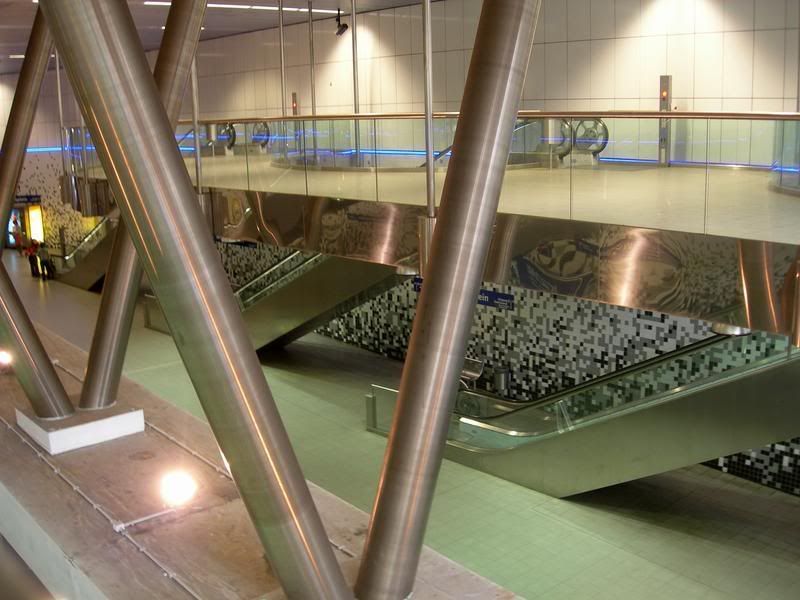
The platforms are actually on an incline. Very strange effect while waiting for the train to arrive.
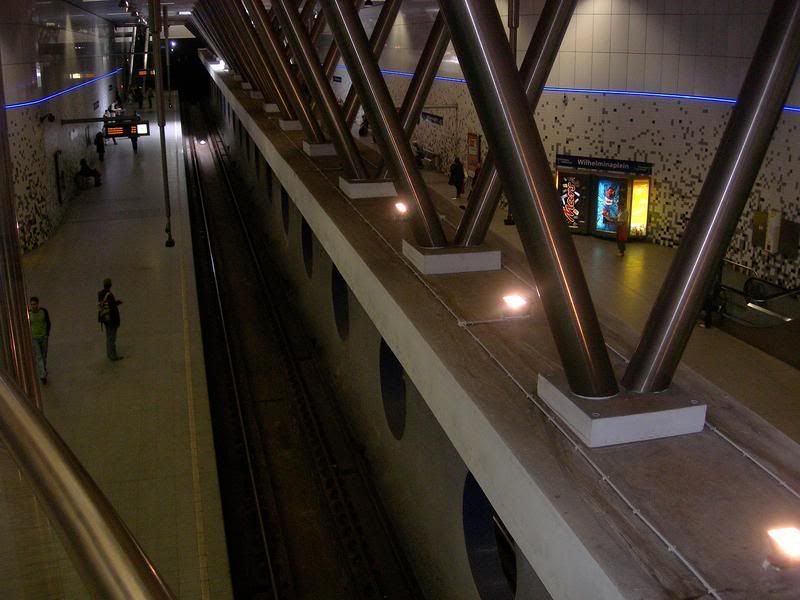
More from the Wilhelminaplein station.
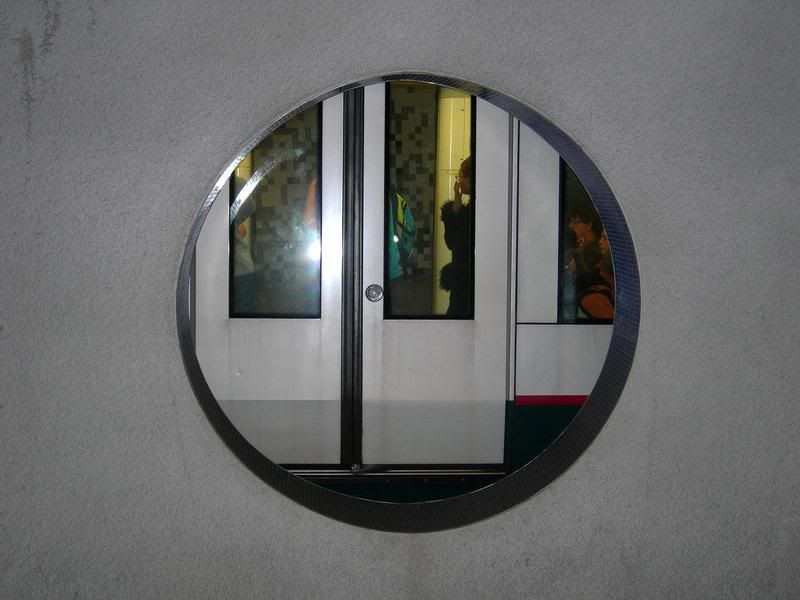
A train rolls into Wilhelminaplein.
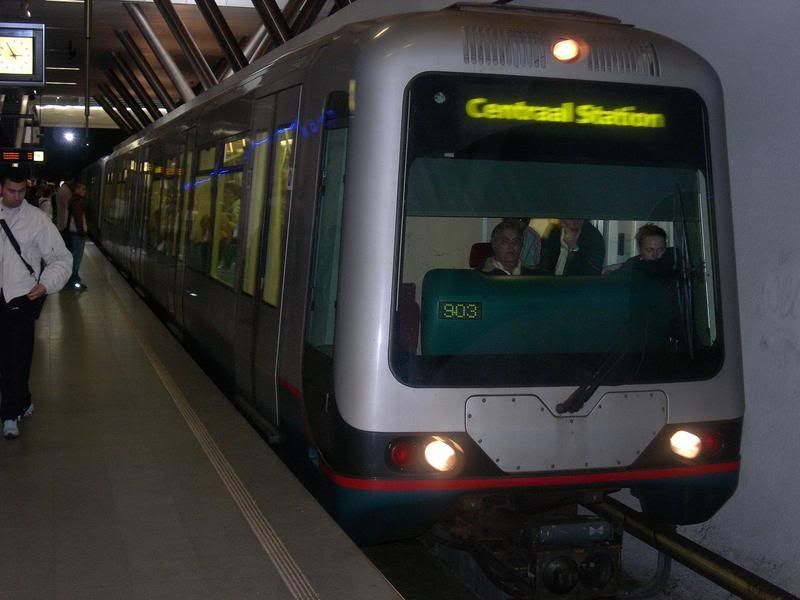
The 'Witte de With' Tower near the Euromast. Urban renewal is totally changing this part of town.
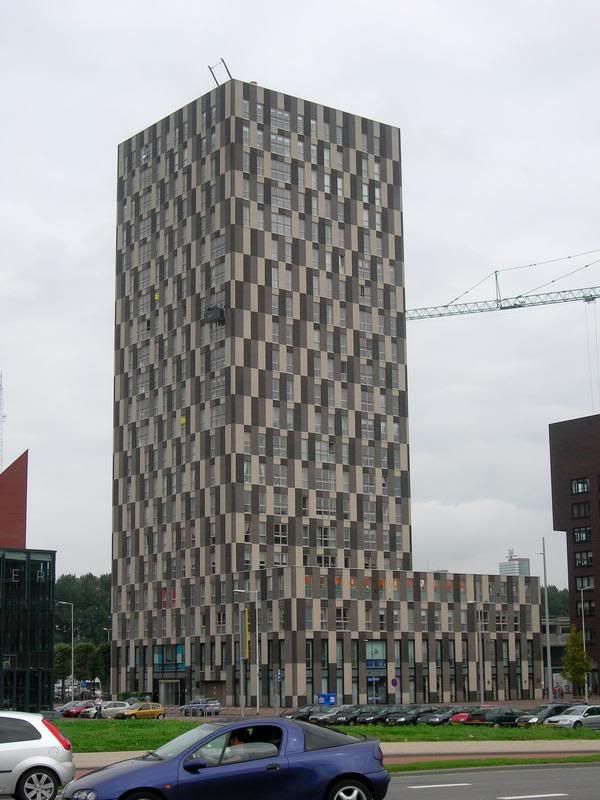
New residential developments near the port.
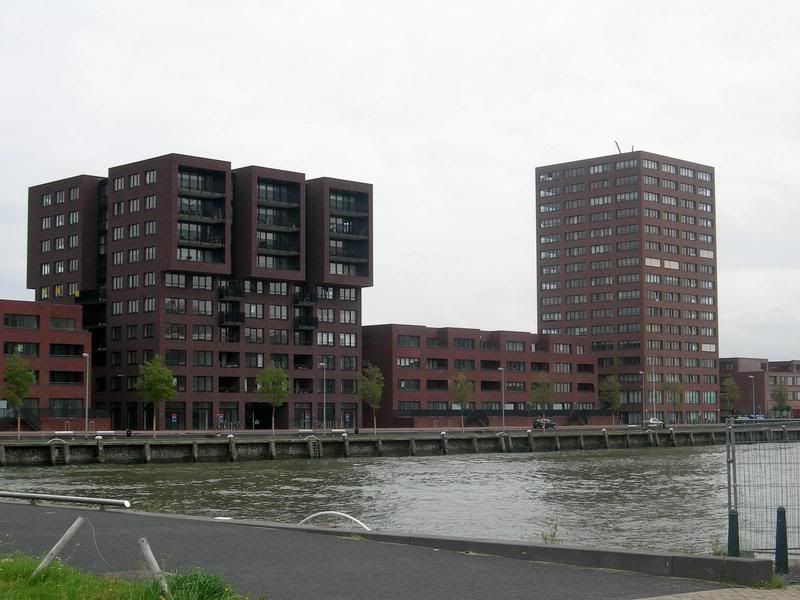
The new Rotterdam Shipping & Transport College. This type of architecture seems to have gained ground here recently.
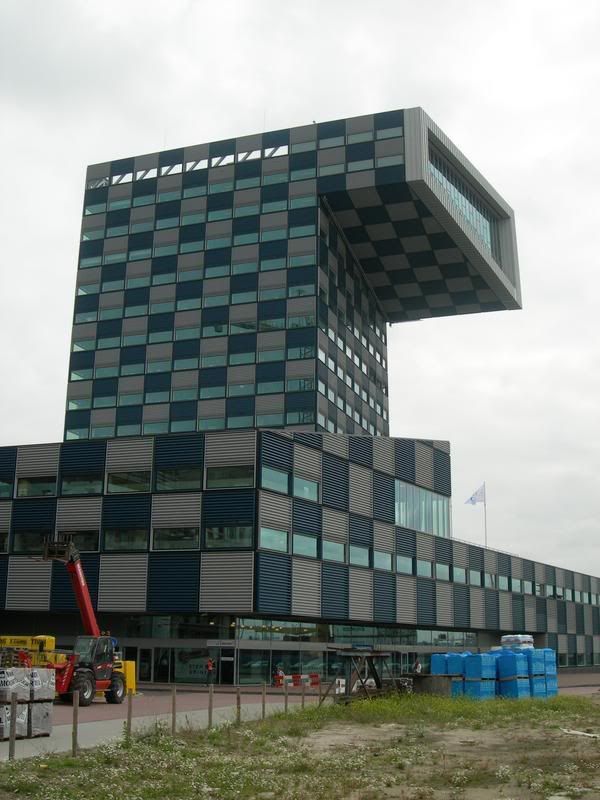
More of the college (which had just opened upon our visit).
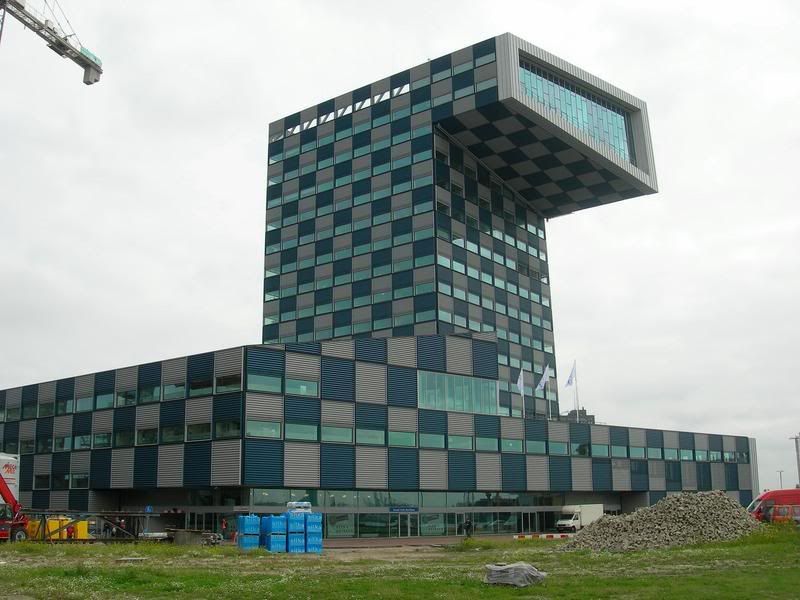
Shipping & Transport College (cont.)
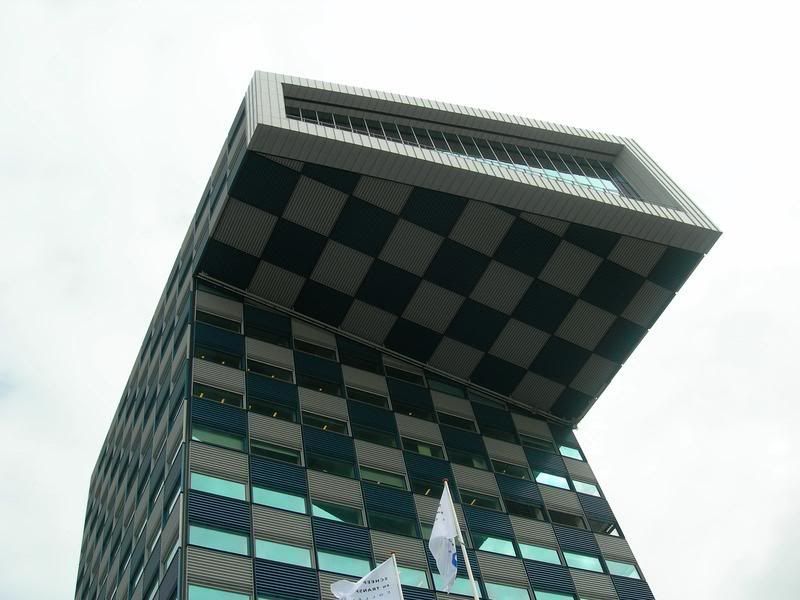
One of the main lecture halls overlooks part of the port.
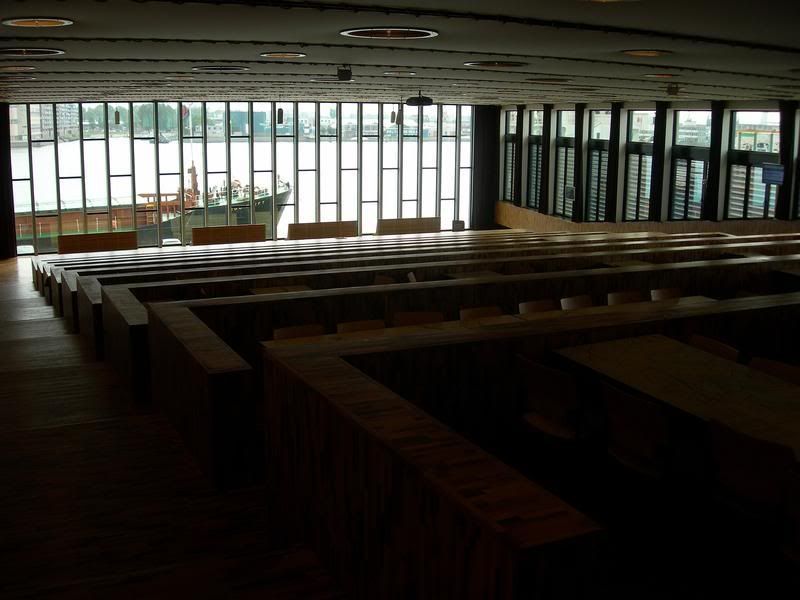
There was no security so we decided to keep walking up the stairs to see if we could get to the roof of the school.
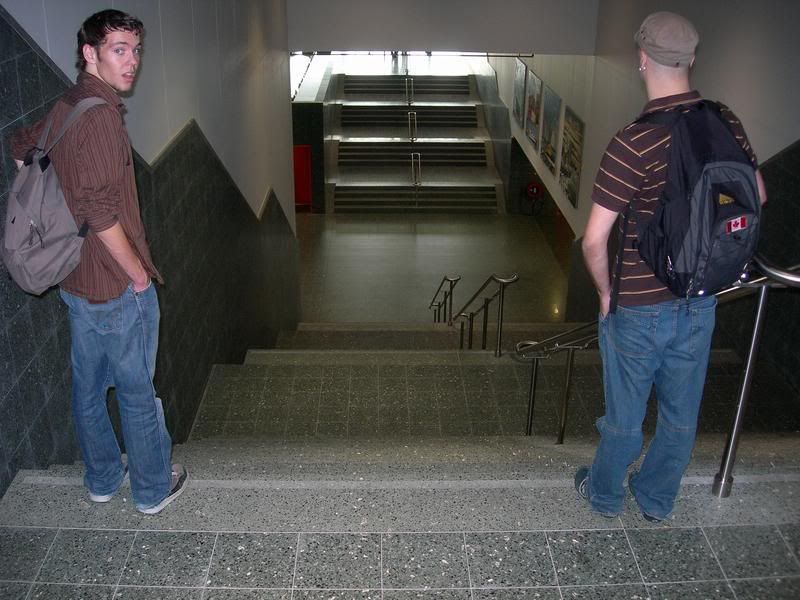
Escalators inside the 14-storey college.
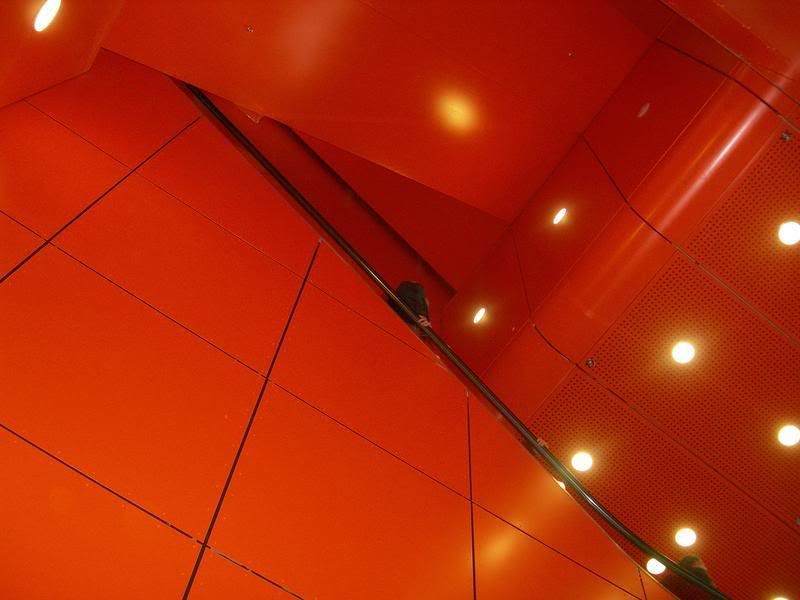
Many flights of stairs, a few escalators and an elevator ride later, we made it to the top! The Witte de With tower can be seen in the middle of the picture. In the upper right, both the Nationale Nederlanden and the Millennium Tower can be seen.
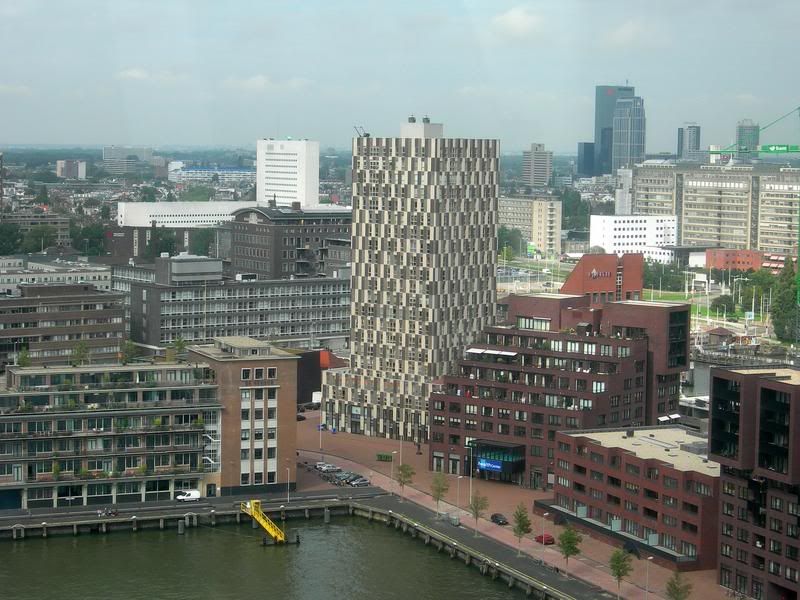
The Euromast.
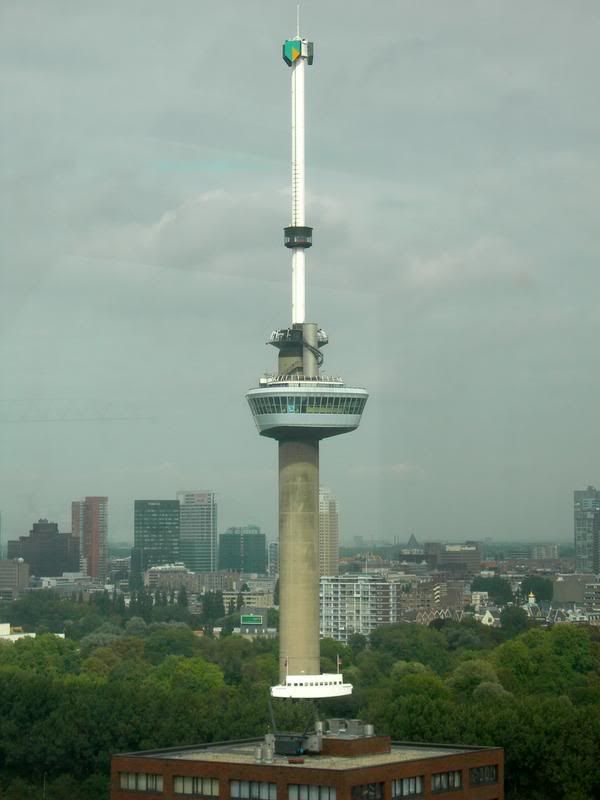
Skyscrapers on the southern bank: Toren op Zuid (left), Norman Foster's World Port Centre (middle) and Montevideo, a residential tower (right).

More of the city's skyline.
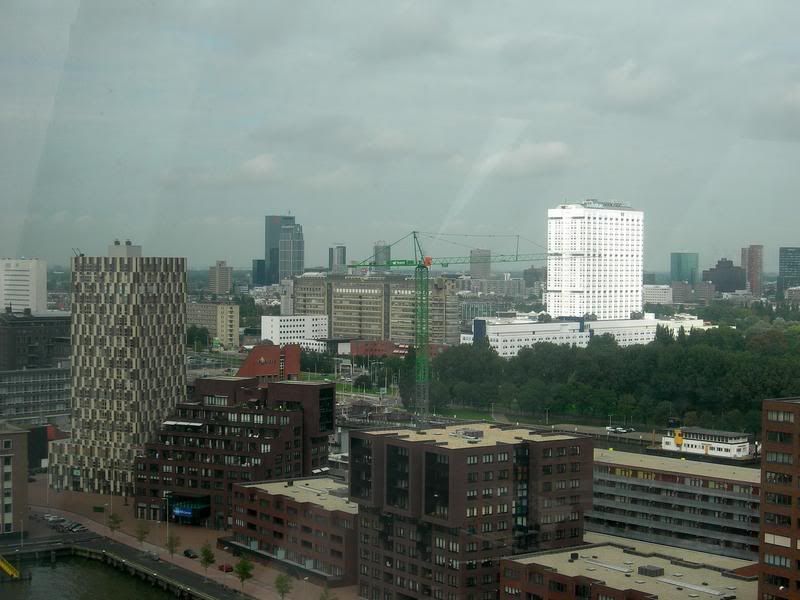
Ronald setting-up the perfect shot.
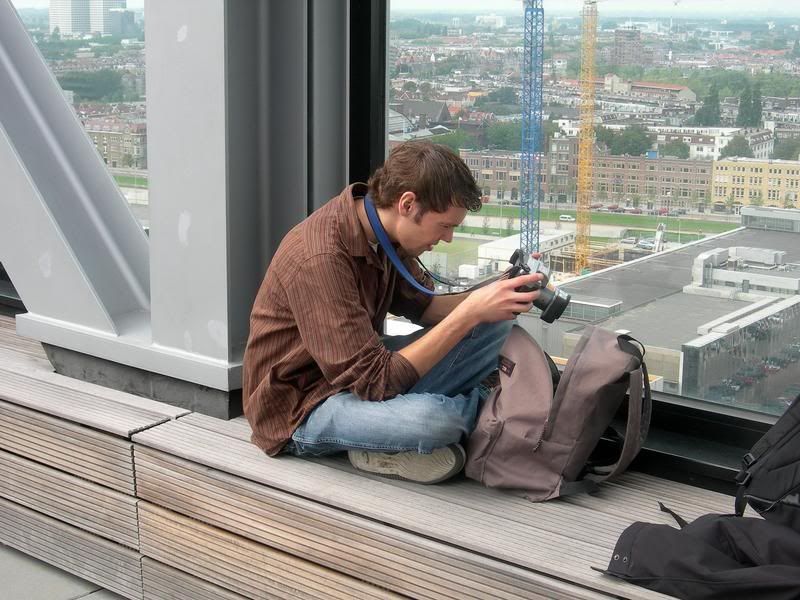
Myself, taking it all in. Note, in the bottom of this pic, cleared ground can be seen. More residences and a park will be built here soon.
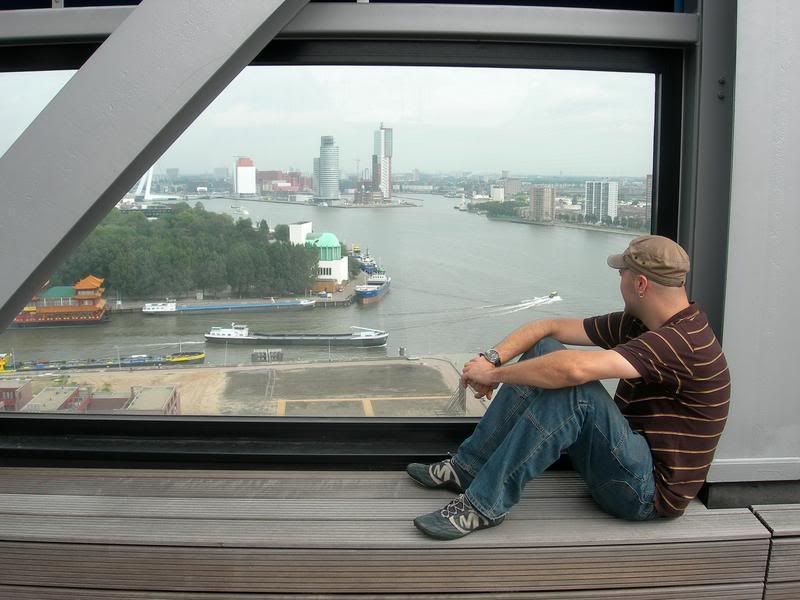
More new development on the way! Note how the old facade is being preserved. Also note how there's construction...everywhere! In that sense, Rotterdam felt a lot like T.O.
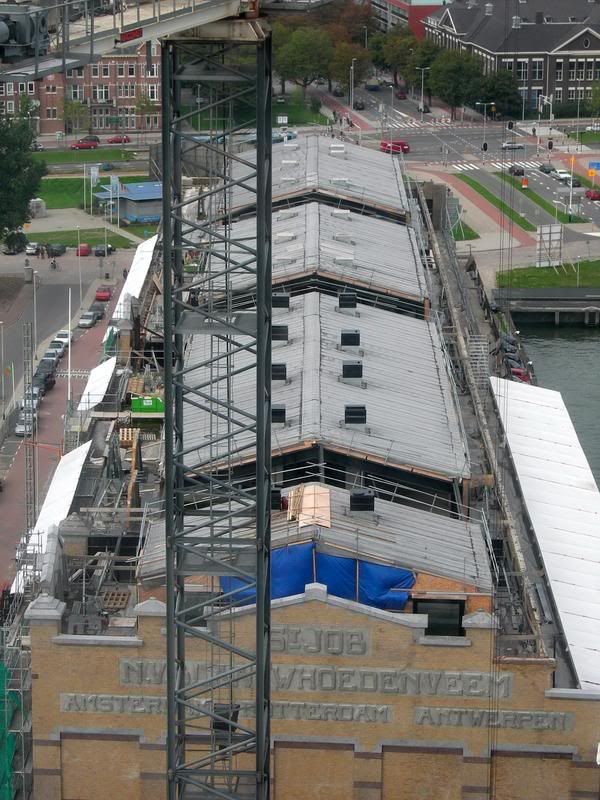
Between the two skyscrapers, Hotel New York can be seen. This is where thousands of Dutch immigrants boarded huge ships, headed for North America, early last century.
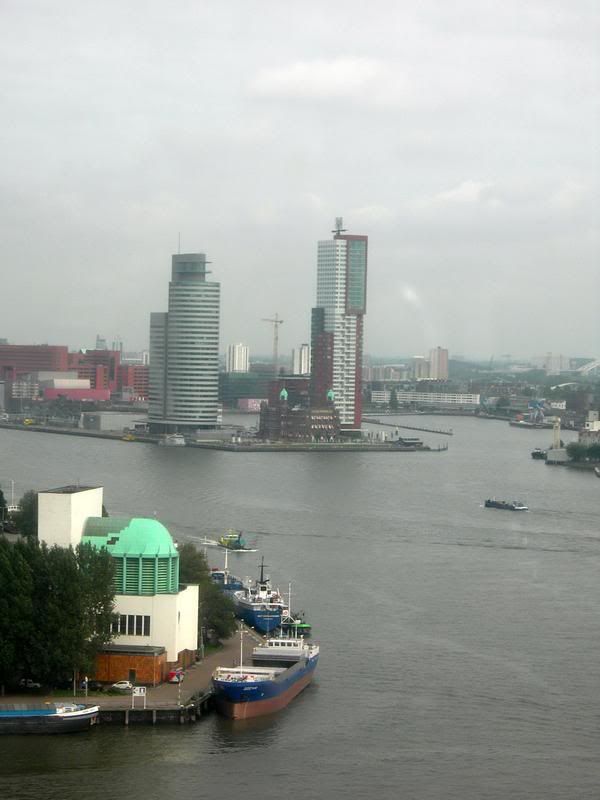
Skyscrapers, cranes, new housing and the Euromast.
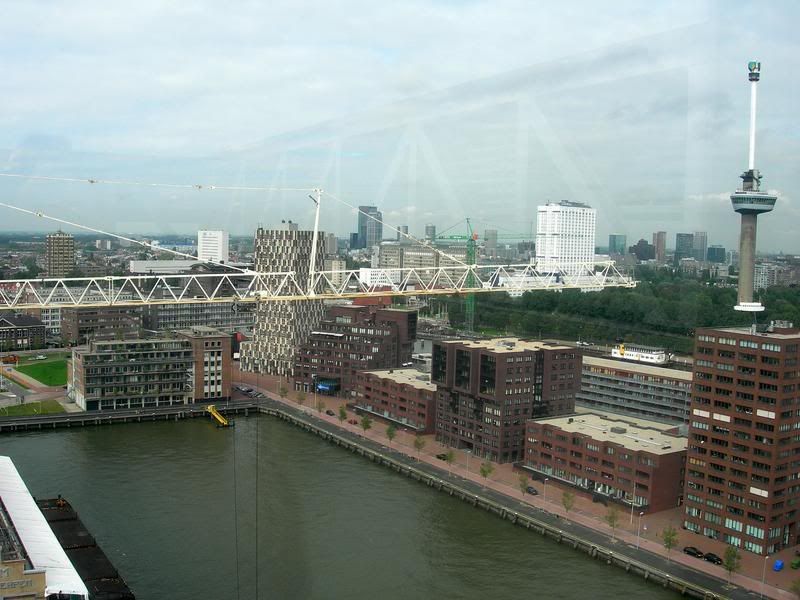
Skylines of Delft (pop. 95000, 12 km from Rotterdam) and The Hague (pop. 450000, 21km from Rotterdam) can be seen from the top of the college. Keep in mind that Holland is the world's second most dense country.
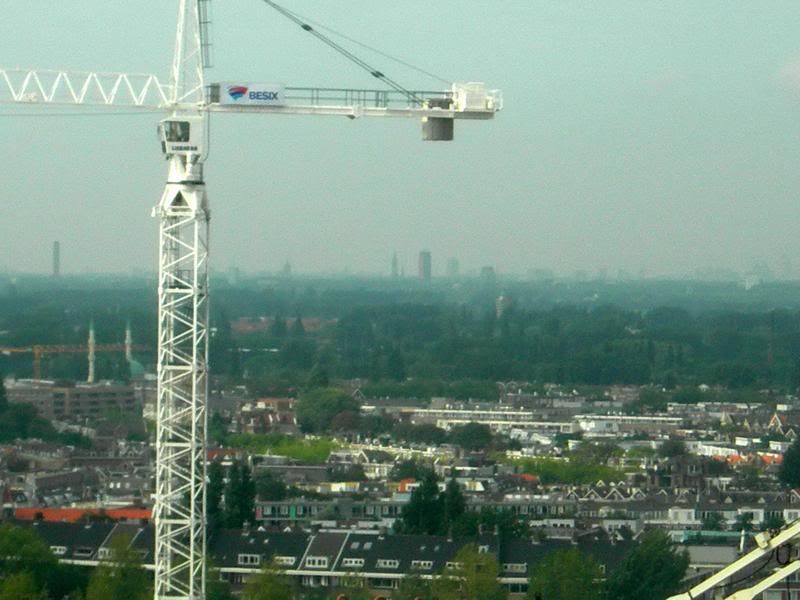
After all that walking it was time for some Pannekoeken and beer! Pancakes are the undisputed king of Dutch food.

Dutch pancakes are sort of like French crepes, only thicker and fatter.
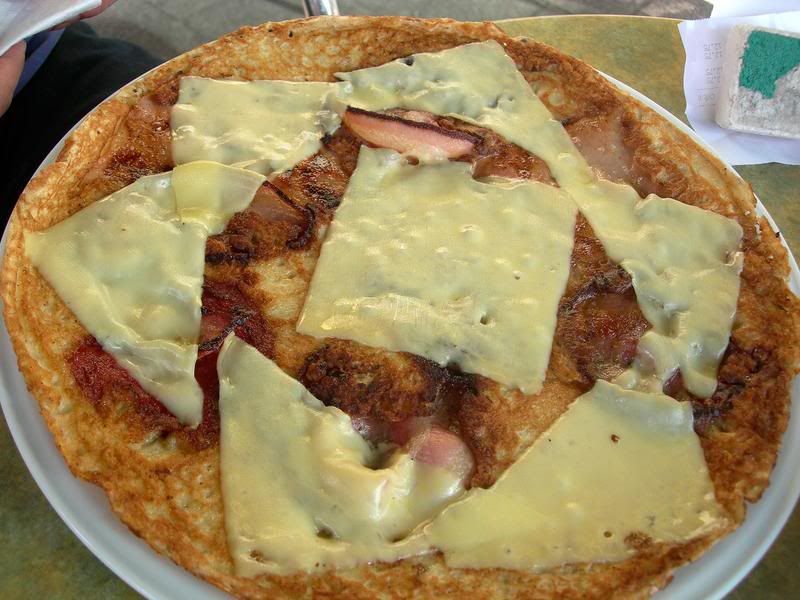
Garbage cans in Rotterdam have no advertising. And yes, "Afval" means trash, not the name of some company.
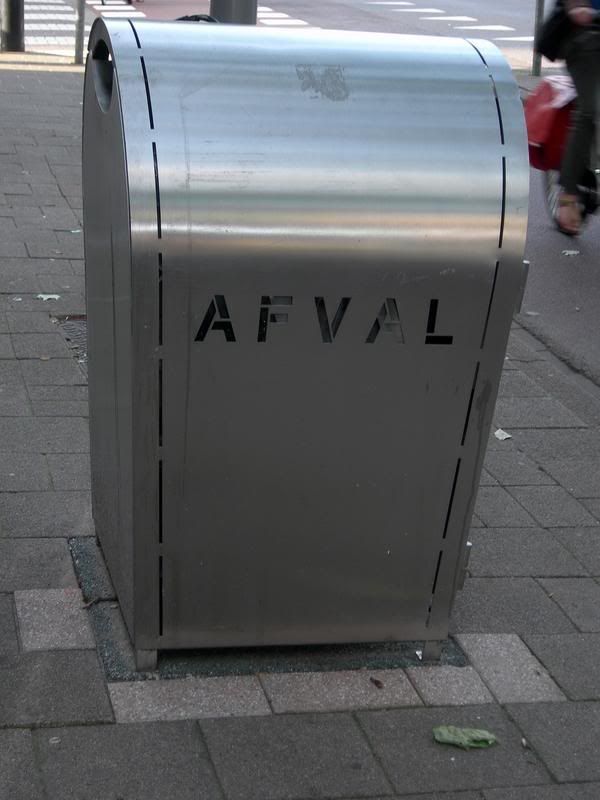
The central post office.
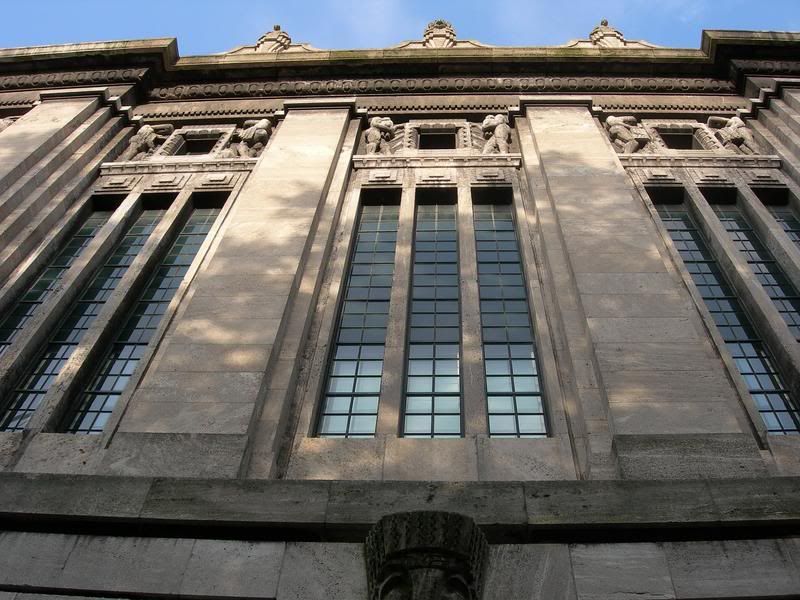
The Post Office, along with City Hall, is one of the very few survivors of WWII.
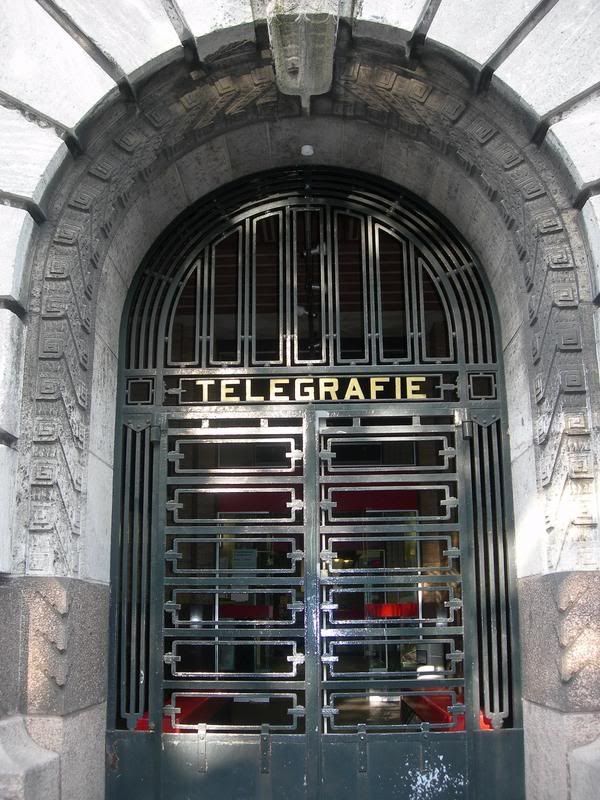
Standing above the platform at City Hall metro station, watching trains passing underneath us. Speaking of, it's time to catch the 17:20 back to Amsterdam!
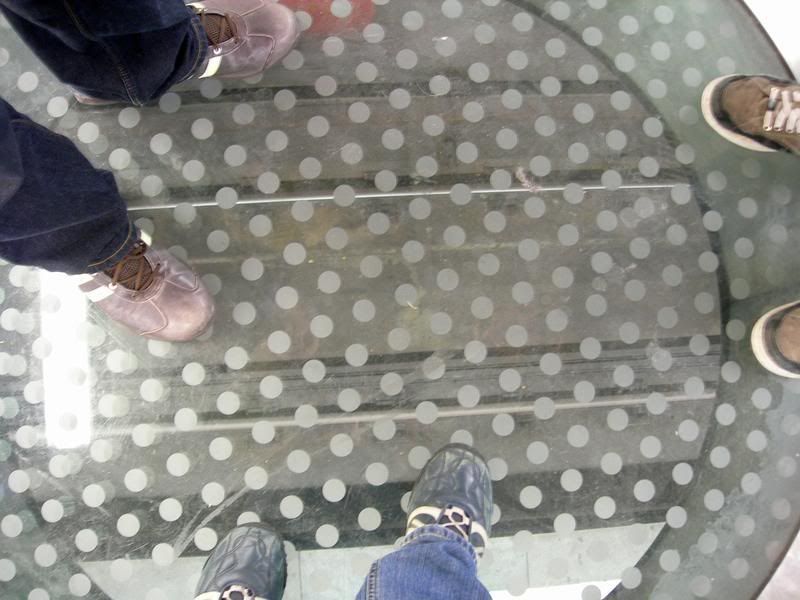
And that my friends was a whirlwind day in Rotterdam. Stay tuned for Paris and London!
Amsterdam I
Amsterdam II
Rotterdam I
Rotterdam II
Paris I
Paris II
Paris III
London I
London II
Here is Rotterdam II...
Entrance to the Blaak intermodal transit station. Trams run above groud, the metro runs underground and national rail services run even deeper underground.

Want to catch the 13:58 to The Hague?

Entrance to the metro portion of the station.

The station was designed in such a way that daylight can reach even the deepest platform. Take that Montreal!

More residential towers are comming soon. The "Red Apple" will rise here over the next few months.

The Willemsbrug.

The Willemswerf was completed in 1989 and measures 88m. Jackie Chan slides down this slope in the movie Who Am I.

The Erasmusbridge is considered the signature of the city. Behind it, the Montevideo residential tower can be seen to the left, and the World Port Centre to the right. Keep in mind that Rotterdam has Europe's largest port!

The 'Toren op Zuid' (a KPN Telecom building, right behind the island in the centre of this picture) was completed in 2000 and is 96m tall. That's the River Maas in the foreground. Also, I must say that while the waterfront architecture certainly kills almost anyhting we have in T.O., I'd actually argue that our central waterfront is slightly nicer and better used. Believe it or not, Toronto seems to have gotten the smaller things better!

The new Golden Tulip Hotel. They are actually still finishing construction on this building which has perfect views of the Erasmus Bridge.

A WWII monument by the waterfront.

The Erasmus bridge is also called 'the Swan' by locals, because of its graceful posture over the water. In the background, the Toren op Zuid can be seen.

More of the Golden Tulip Hotel.

A new waterfront residential development.

In typical Dutch style, all modes of transport are separated on the Erasmus Bridge. Trams, cars, bikes and pedestrians each have their own right-of-ways.

New and old trams on the Erasmus Bridge.

Waterfront skyscrapers; a mix of residential and office towers.

Looking up the Erasmus Bridge. It is 139m tall and was opened in 1996.

The Toren op Zuid ("Tower on the South" if you want to literally translate it) was completed in 2000.

This was supposed to be Europe's biggest TV screen, but that proved too expensive. Now they just have these 896 green dots that light up. Still pretty darn cool though!

Looking up the foreward-leaning Toren op Zuid.

The building to the left is the Court of Justice. To the right, above the metro entrance, the the new Luxor Theatre.

Underground walkway in the Wilhelminaplein metro station.

Wilhelminaplein metro (cont.)

This square is surrounded by buildings that are part of the Court of Justice complex.

Car entrance to the court's underground parking garage.

The court's multi-storey parking garage. Too bad all parking lots don't look this good!

The Court of Justice complex (cont.)

Myself and Ronald inside the courtyard. In the background, another entrance to metro can be seen.

Inside the courtyard's art installation.

Wilhelmina Station. Money, nor effort was spared when this station was built.

The platforms are actually on an incline. Very strange effect while waiting for the train to arrive.

More from the Wilhelminaplein station.

A train rolls into Wilhelminaplein.

The 'Witte de With' Tower near the Euromast. Urban renewal is totally changing this part of town.

New residential developments near the port.

The new Rotterdam Shipping & Transport College. This type of architecture seems to have gained ground here recently.

More of the college (which had just opened upon our visit).

Shipping & Transport College (cont.)

One of the main lecture halls overlooks part of the port.

There was no security so we decided to keep walking up the stairs to see if we could get to the roof of the school.

Escalators inside the 14-storey college.

Many flights of stairs, a few escalators and an elevator ride later, we made it to the top! The Witte de With tower can be seen in the middle of the picture. In the upper right, both the Nationale Nederlanden and the Millennium Tower can be seen.

The Euromast.

Skyscrapers on the southern bank: Toren op Zuid (left), Norman Foster's World Port Centre (middle) and Montevideo, a residential tower (right).

More of the city's skyline.

Ronald setting-up the perfect shot.

Myself, taking it all in. Note, in the bottom of this pic, cleared ground can be seen. More residences and a park will be built here soon.

More new development on the way! Note how the old facade is being preserved. Also note how there's construction...everywhere! In that sense, Rotterdam felt a lot like T.O.

Between the two skyscrapers, Hotel New York can be seen. This is where thousands of Dutch immigrants boarded huge ships, headed for North America, early last century.

Skyscrapers, cranes, new housing and the Euromast.

Skylines of Delft (pop. 95000, 12 km from Rotterdam) and The Hague (pop. 450000, 21km from Rotterdam) can be seen from the top of the college. Keep in mind that Holland is the world's second most dense country.

After all that walking it was time for some Pannekoeken and beer! Pancakes are the undisputed king of Dutch food.

Dutch pancakes are sort of like French crepes, only thicker and fatter.

Garbage cans in Rotterdam have no advertising. And yes, "Afval" means trash, not the name of some company.

The central post office.

The Post Office, along with City Hall, is one of the very few survivors of WWII.

Standing above the platform at City Hall metro station, watching trains passing underneath us. Speaking of, it's time to catch the 17:20 back to Amsterdam!

And that my friends was a whirlwind day in Rotterdam. Stay tuned for Paris and London!




